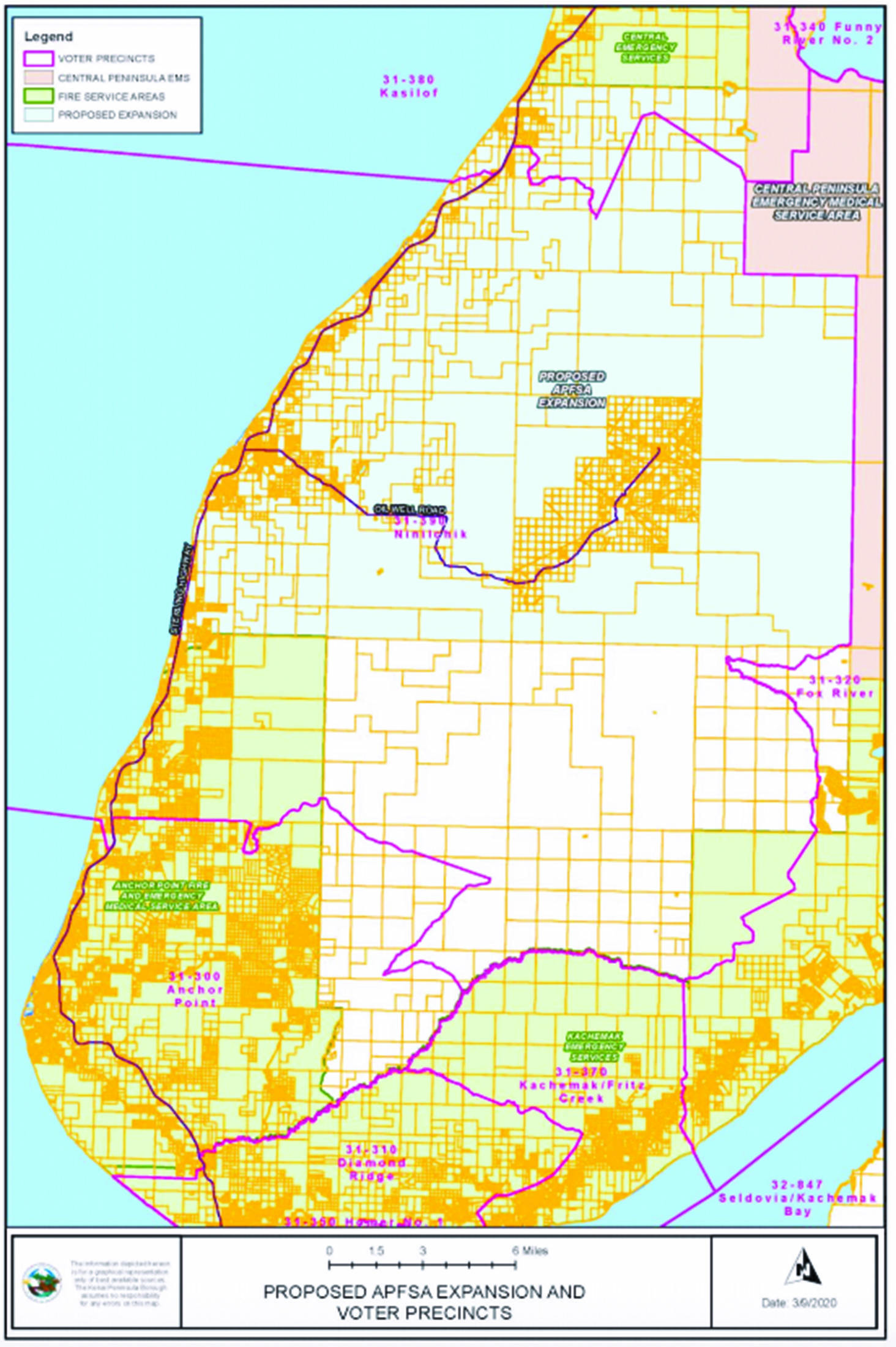Anchor Point and Ninilchik residents have the choice to join forces — or, more appropriately, taxes — to form a joint fire and medical service area, after the Kenai Peninsula Borough Assembly voted to put the question on the upcoming municipal election in October.
Residents from both communities will vote on a proposition to form a combined borough service area, which would be called the Western Emergency Service Area. The assembly voted unanimously at their July 7 meeting to approve an ordinance that puts the question on the October ballot.
Ninilchik’s fire department is volunteer-run and overseen by a private nonprofit organization. It is not an official service area under the borough. Early this year, fears and emotions erupted in the small fishing community when the former board of directors for that nonprofit, Chief Dave Bear, the one paid staff member, and the volunteer assistant chief proposed shutting down fire and EMS service entirely for a few days.
Service and response to calls ultimately went uninterrupted, but the community expressed outrage and confusion during a lengthy town hall meeting. After that, the entire board of directors stepped down and was replaced in a matter of days. One of the potential solutions to concerns about continuity of service is the ability to form an official service area under the arm of the borough. The new NES board of directors has officially come out in support of that idea.
The borough formed a work group this spring to investigate the issue, which held multiple public hearings before making a final recommendation to the assembly.
Assembly member Brent Johnson, who sponsored the ordinance to put the question of a joint service area on the October ballot, stressed that this process was started by community members who wanted a change.
“The people of Ninilchik voiced a desire to have improved services,” he said.
The proposed boundaries of the combined service area would start at the northernmost end around the microwave transmission tower in Clam Gulch, and end to the south where the Kachemak Emergency Service Area begins. In essence, the plan expands the existing Anchor Point Fire and Emergency Medical Service Area north to include most of the Ninilchik voting precinct boundaries. The expansion continues north until it abuts the Central Emergency Services’ southern boundary.
Nikolaevsk is currently served by the Anchor Point Fire and Emergency Medical Service Area, which maintains a fire hall in that community. It would continue to be covered by a joint service area.
Johnson said at a previous borough public hearing on the issue that there was a specific effort to not allow any gaps between existing service areas. He has also explained previously that the proposed boundaries were drawn specifically to include several oil and gas properties to capitalize on their contribution.
Should voters approve the joint service area, they would pay a mill rate of 2.95, or $295 per $100,000 of assessed property value, which would maintain at least 10 full-time employees to be split between the two areas. This is slightly higher than the Anchor Point service area’s current mill rate of 2.85 mills, or $285 per $100,000 of assessed property value.
The joint service area would continue to draw from a pool of volunteer firefighters and EMTs from both communities.
If Ninilchik were to form its own official borough service area, independent from Anchor Point, residents would have to pay 5.75 mills to afford three full-time staff members.
Voters in both Anchor Point and Ninilchik will have to approve the ballot proposition by a majority vote in order for it to pass. If one community passes it but the other votes it down, the proposition will fail.
Should the joint service area be created, NES will have to transfer its monetary and equipment assets, including the building the fire department is located in, to the ownership of the borough. The nonprofit could continue to operate as a support organization raising additional funds for the department.
During his overview of the ordinance at the July 7 meeting, Johnson mentioned that Ninilchik residents took issue with the fact that the former NES board was not a publicly appointed or elected board.
“That’s no fault of their own,” he said. “They had been carrying the ball in providing emergency services for years and that’s how the thing had evolved.”
Board members for a combined service area would be elected by voters.
Read the ordinance at kpb.legistar.com/Calendar.aspx.
Read the work group’s final report and recommendations to the assembly at kpb.us/assembly-clerk/active-task-forces/ninilchik-anchor-point-joint-service-area-work-group
Reach Megan Pacer at mpacer@homernews.com.

